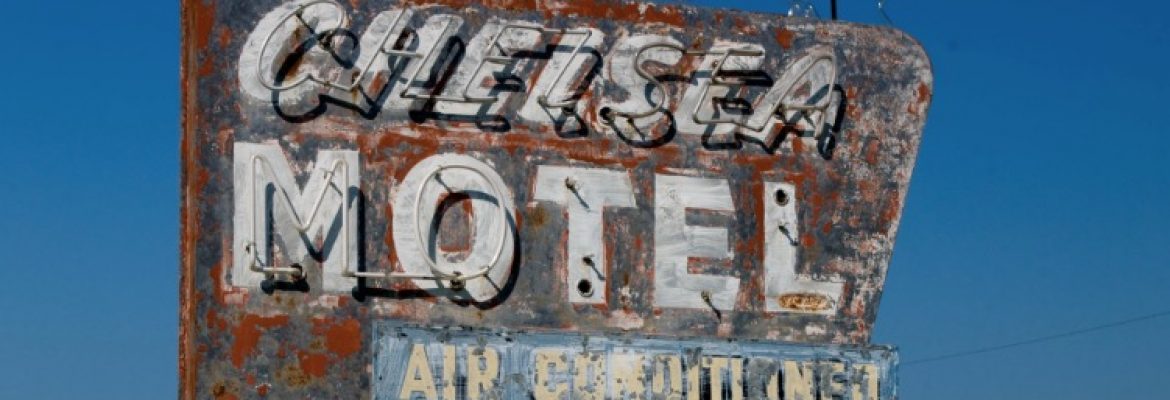Chelsea Motel, Chelsea, Oklahoma, USA
Motels, and gas stations were the backbone of the Route 66 economy. The Chelsea Motel–modest and now abandoned, with paint peeling off its once-white walls–is evidence of that vibrant period when Route 66 helped transform the social and economic landscape of Middle America. All along the length of Route 66, the highway generated social change–first as the stimulus for hundreds of mom and pop motels like the Chelsea Hotel, and later as those same enterprises faded away.
At the time of Route 66’s designation as a Federal highway, Chelsea was one of a string of towns in northeastern Oklahoma connected by the highway. At that point, Chelsea had a solid commercial district and at least one oil refinery. The center of town was the railroad depot. Route 66 shifted the center. For most of its distance in Chelsea, the highway ran on the east side of the railroad, opposite the business district. Route 66 did not enter Chelsea’s business district at all but skirted to the southwest toward Claremore and Tulsa. Route 66 was a powerful magnet, and Chelsea commerce followed the new highway. Within a few years, several businesses emerged along the east side of Route 66 (Walnut Avenue)–stations, cafes, and motels designed to accommodate the auto traffic that was increasing along the route.
It’s easy to imagine a vacationing family, tired from a long day on hot Oklahoma roads, taking pleasure in the sight of a line of cafes and motels where they could eat, rest, and sort out the back-seat quarrels between the kids. One of the most prominent of those businesses on Walnut Avenue was the Chelsea Motel, complete with a large, elaborate neon sign. The simple stucco rectangular building held six motel units.
Perhaps by 1936, but certainly by 1939, the motel was operating at the corner of First and Walnut. These were good years for small-time motel owners. The Chelsea changed ownership occasionally during its two decades of operation, but the late 40s and early 50s were a booming time in the mom-and-pop motel industry. A modest row of rooms on a busy thoroughfare could provide a family with a steady income.
By the mid 1950s, however, pressures were increasing on enterprises like the Chelsea Motel. Competition increased as the number of motels more than doubled nationwide between 1946 and 1953. Motels were changing, too, requiring bigger facilities and amenities like telephones and air conditioning. The Chelsea Motel responded to these demands, but an even bigger threat to the survival of the enterprise was building.
Automobile traffic on Route 66 led to the creation of the Chelsea Motel, and paradoxically its success would lead to its demise. During the post-war years, Route 66 in Oklahoma became increasingly congested with cars, trucks, and buses. Federal efforts to improve the highway turned into a project to replace it altogether. In 1953, the Turner Turnpike between Tulsa and Oklahoma City opened, running essentially parallel to Route 66.


